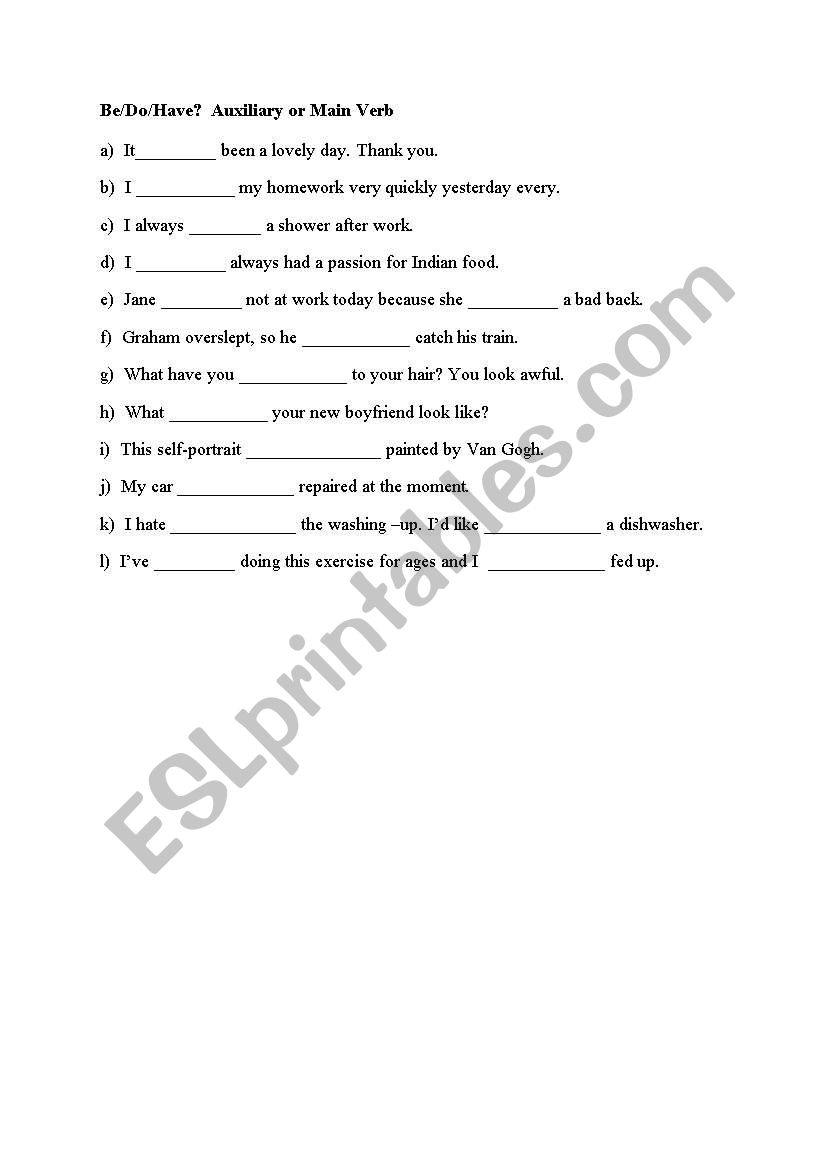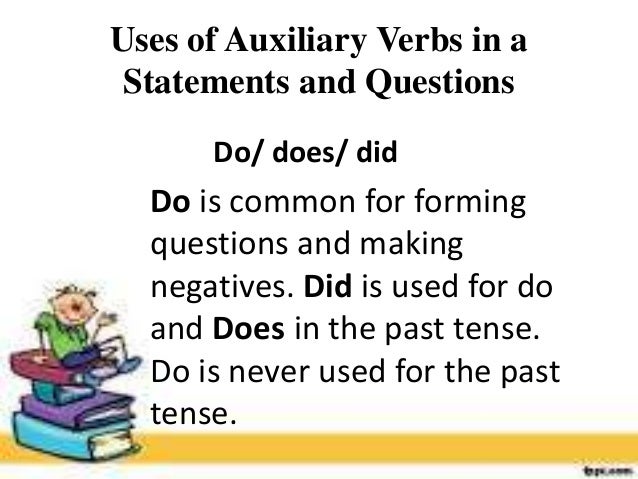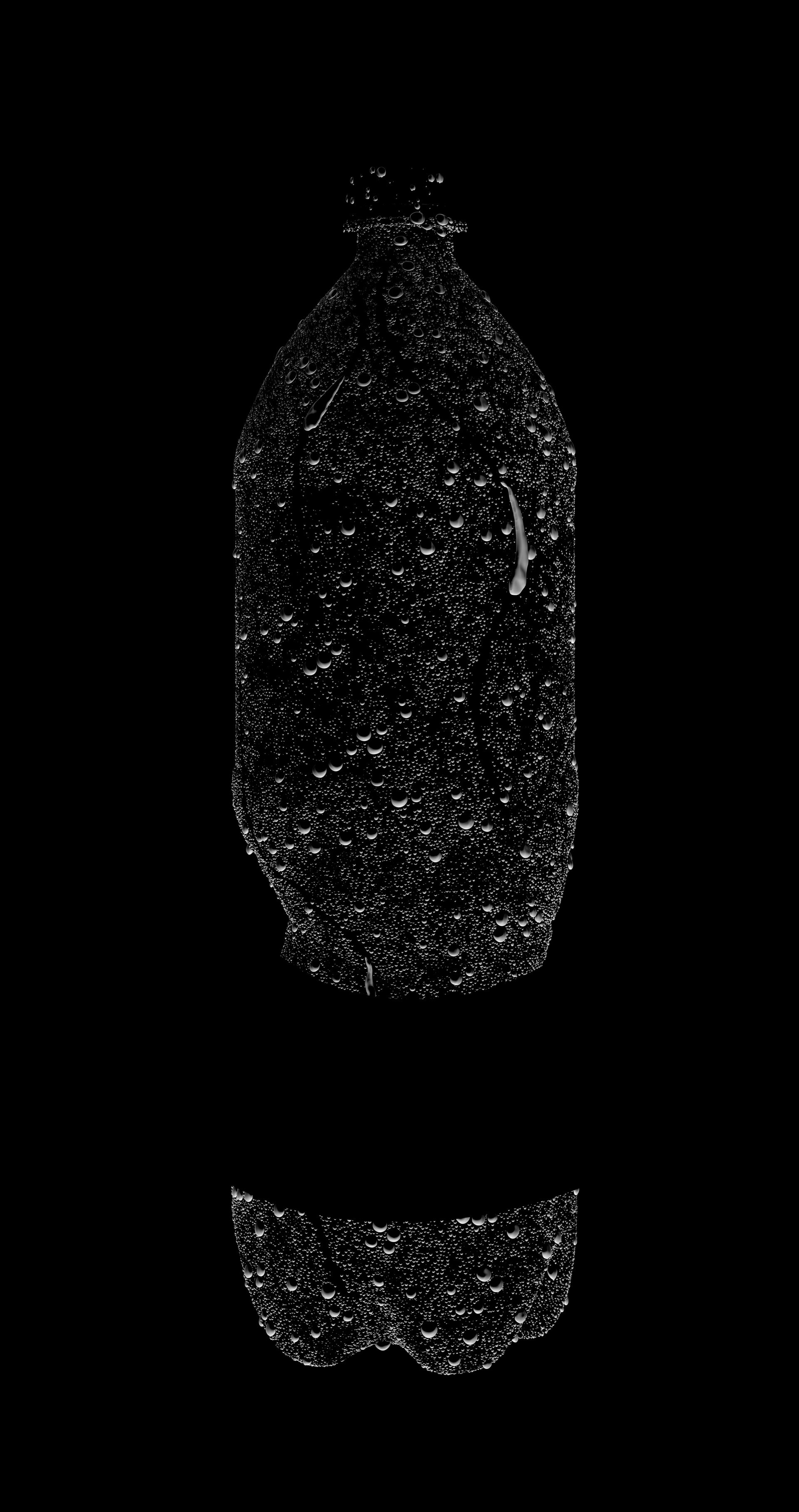Auxiliary verbs usually accompany an infinitive verb or a participle, which respectively provide the main semantic content of the clause. An example is the verb have in the sentence I have finished my lunch. Here, the auxiliary have helps to express the perfect aspect along with the participle, finished. Some sentences contain a chain of two or more auxiliary verbs.
Auxiliary verbs are also called helping verbs, helper verbs, or auxiliaries. Research has been conducted into split inflection in auxiliary verbs. The combination of helping verbs with main verbs creates what are called verb phrases or verb strings. In many cases it is almost impossible to determine in which sense the writer or speaker has used the expression.
How do you identify an auxiliary verb and a main verb This may explain to a certain extent the differences of opinion among grammarians as to this or that particular example. In English there are two types of auxiliary verb, primary auxiliaries and modal auxiliaries. The three primary auxiliary verbs are 'be', 'have' and 'do'. There are ten common modal auxiliary verbs and they are 'can', 'could', 'will', 'would', 'shall', 'should', 'may', 'might', 'must' and 'ought'. The verb 'have' can also be used as full verb or a helping verb. The way to differentiate between them is that if 'have' is used as an auxiliary verb, then it has to be followed by a main verb as well.
The verb 'have' is used to make compound tenses in active and passive voices, and also used in the making of negative sentences and questions. It is an irregular verb that changes form according to tense. Some auxiliaries are usually called modal but often act to give grammatical information by forming a tense with a main verb. For this reason, some people will classifywill and would as Primary Auxiliary verbs. That is a sensible approach because both verbs can act in both ways. The classification is then split so when they act as primary modal auxiliaries, that is what they should be called and likewise when they act as modal auxiliary verbs.
Helping verbs are defined as verbs that help the main verb in a sentence by extending its meaning. They add detail to the main verb and are needed to complete the structure of a sentence. They can also clarify how time is conveyed in a sentence. As a result, helping verbs are used to create the complicated progressive and perfect verb tenses.
Learn about the two types of helping verbs and review examples of each. The helping verb 'do' can also act as a full verb only in positive sentences. When do is used in a negative sentence, it is an auxiliary verb. The helping verb 'do' is also used to make questions for most verbs except other auxiliary verbs and the modal verbs.
"Do" is an irregular verb that changes its form according to the tense. Modal verbs, which may express such notions as possibility ("may," "might," "can," "could") or necessity ("must"). Although there are a variety of auxiliary verbs in the English language, the following words are a few that often function as helping verbs. Note that these auxiliary verbs may function as action or linking verbs in other cases.
The primary auxiliary verbs are be, do, and have, and they are the most commonly occurring auxiliaries in English. Each can also be used as a main verb in a clause, and each is able to conjugate to reflect plurality, tense, or aspect. Modal verbs are auxiliary verbs like can, will, could, shall, must, would, might, and should.
Modal verbs add meaning to the main verb in a sentence by expressing possibility, ability, permission, or obligation. Inversion refers to the reversal of the normal position of the subject and the auxiliary verb of a clause. Additionally, subject-auxiliary inversion can be used to create conditional sentences, as well as for emphasis in negative sentences when negating phrases are used. Some syntacticians distinguish between auxiliary verbs and light verbs. The two are similar insofar as both verb types contribute mainly just functional information to the clauses in which they appear.
If the negative forms can't, don't, won't, etc. are viewed as separate verbs , then the number of auxiliaries increases. The verbs do and have can also function as full verbs or as light verbs, which can be a source of confusion about their status. The modal verbs form a subclass of auxiliary verbs. Modal verbs are defective insofar as they cannot be inflected, nor do they appear as gerunds, infinitives, or participles. You may have heard auxiliary verbs referred to as helping verbs, but what is this type of verb, and what does it do in English?
When we say it is "helping" a main verb, we mean it's helping to clarify it. Explore what auxiliary verbs are and how they are used in English. For example, the sentence "Shannon is and plays in the field" doesn't make sense because is is a state of being and plays is an action verb.
Many readers think that a modal verb, such as should, must or can, is the main verb in a sentence. However, like helping verbs, modal verbs only exist to support main verbs. For example, the sentence "I should to the store" doesn't make sense; should is not a main verb. I'd wager you use auxiliary verbs and modal auxiliary verbs without giving them a second thought, so I'm mindful that this page has covered a lot of gumpf that you don't really need. Well, that's true provided we're talking about working in English.
If you start learning a foreign language, it won't be too long before you'll be unpicking how they express tense, voice and mood. And, do you know what's a good starting point for that? Modal auxiliary verbs combine with other verbs to express ideas such as necessity, possibility, intention, and ability.
In each example below, the verb phrase is in bold and the modal auxiliary verb is highlighted. These verbs are also called Helping Verbs, as they 'help' the main verb to denote the actions of the subject. They help in making compound tenses of the main verb and also help in making negative statements, questions and passive voice statements. In both these cases the verb is followed by the past participle of a lexical or main verb and used to form what is called the passive voice. The passive is often used when the doer of the action is unimportant or unknown and to lay stress on the action itself and the object of the action.
In sentence e., the auxiliary be is used alongside the auxiliary have so this sentence shows both perfect aspect and passive voice. While a lexical verb provides content and meaning information, an auxiliary verb provides grammatical information. Auxiliary verbs are not used alone, but lexical verbs may be.
Both lexical and auxiliary verbs are important to the structure and sense of a sentence. What is the difference between a lexical verb and an auxiliary verb? Since a verb is a main part of a sentence, the difference in these two types of verbs is significant. One type of verb shows word meaning, or content, and the other type shows grammatical meaning. Auxiliary, in grammar, a helping element, typically a verb, that adds meaning to the basic meaning of the main verb in a clause.
Auxiliaries can convey information about tense, mood, person, and number. An auxiliary verb occurs with a main verb that is in the form of an infinitive or a participle. The auxiliary verbs (or "helping verbs") cannot stand alone in a sentence, but must always be accompanied by a main verb. Given the data below, determine whether auxiliaries actually belong to the category Verb, or whether they should be put into a separate category Auxiliary .
Part 1 below applies the inflectional tests for verbs to the auxiliaries. Part 2 shows the syntactic distribution of auxiliaries. First, determine what the distribution is in each case and then decide whether auxiliaries have the same distribution as verbs. See the section on Conditional Verb Forms for help with the modal auxiliary would. The shades of meaning among modal auxiliaries are multifarious and complex.
Most English-as-a-Second-Language textbooks will contain at least one chapter on their usage. For more advanced students, A University Grammar of English, by Randolph Quirk and Sidney Greenbaum, contains an excellent, extensive analysis of modal auxiliaries. My mother seemed to be wondering – some quasi-auxiliaries exist, quasi in the sense that they consist of a small cluster of words rather than a single verb. Here, is the finite verb marked for person, number and tense, followed by [preposition to + base form + -ing form].
If you had analysed as an auxiliary followed by a base form and an –ing form, you would not be incorrect. The UCL internet grammar gives a short list of quasi-auxiliary verbs. When it comes to auxiliary verbs, 23 auxiliary verbs stand out.
The "Big Three" auxiliary verbs are "be," "have" and "do" in all their forms. But, there are also a few other auxiliary verbs called modal auxiliary verbs. Sometimes actions or conditions occur only one time and then they're over. It's at times like these that some of the same verbs that are used as auxiliary verbs are instead used as action or linking verbs. This is one of the most common auxiliary verbs, but because it stands alone here, it is not functioning as an auxiliary verb.
The main verb is also called the lexical verb or the principal verb. This term refers to the important verb in the sentence, the one that typically shows the action or state of being of the subject. Main verbs can stand alone, or they can be used with a helping verb, also called an auxiliary verb.
Auxiliary verbs in general are sometimes called 'helping verbs' and, although that is rather babyish, there is a kernel of truth in it. Primary Auxiliaries help in the sense that they provide grammatical information and tell us how to view the lexical or main verb which follows. In English, we use modal auxiliary verbs to express ideas such as possibility, ability, obligation and compulsion. VerbIdeascanchange.Youmustwaithere.Some statements use more than one auxiliary verb. Note that the first auxiliary verb is conjugated for tense and person.
The following auxiliary verbs take the form of a present participle or a past participle. The main verb takes the form of a present participle or a past participle. Here are examples of sentences constructed with two auxiliary verbs. AUXILIARY VERB A non-modal auxiliary can be marked for tense and 3rd person, but it does not have a dictionary meaning.
It combines with a lexical verb to form meaning. It uses auxiliary support for questions, negatives and emphasis. To answer that question properly, we need to amend it first to reflect the fact that while "has" is indeed an auxiliary verb, "is" is not an auxiliary verb but a linking verb. Auxiliary verbs always need a main verb to function, but linking verbs are stand-alones that don't need a main verb. We will establish the basis for this telltale distinction by doing a quick review of verbs, auxiliary verbs, and linking verbs.
The verbs can, could, will, would, shall, should, must, may, and might are known as modal auxiliary verbs. These are distinguished by the fact that they are unable to conjugate into different forms, and they are only followed by a verb in its base form. When this occurs, perfect aspect is superior to progressive aspect, e.g.
Just as action verbs describe what a subject does, linking verbs describe the subject in some other way. Most often, they define or describe the subject of the sentence. Note that in the two example sentences the linking verb connects the subject to its definition. In the first sentence, Jane is defined as a nice person; in the second sentence, the new cat is identified as a possible calico.
In present progressive sentences, the verb expresses action in progress as the speaker says it. "I am typing" is an example of present progressive. In it, the main verb is "type" while the auxiliary verb "be" is conjugated according to the subject, "I." Let's look at a few more examples of present progressive tense. In order for a sentence to be complete, it must have a subject and a predicate.
The main verb will be located within the predicate of a sentence, and it expresses the action or state of being of the subject. While infinitives and auxiliary verbs can sometimes cause confusion, you should simply ask, 'What is the subject doing? When main action words are mentioned in progressive forms (verb + "ing" form), they need auxiliary verbs.
For example, in the sentence "I am talking", the main verb is "talk", which is in the verb + "ing" form. With this in mind, you can check to see which definition is being used. The example you had found clearly treats the copula form of "be" as not an auxiliary, so it considers main verbs to never be auxiliary verbs. The primary auxiliary verbs are 'be', 'have' and 'do'. These verbs modify other verbs in a full verb phrase, e.g. 'is going', 'has gone', or 'did go'.


























No comments:
Post a Comment
Note: Only a member of this blog may post a comment.